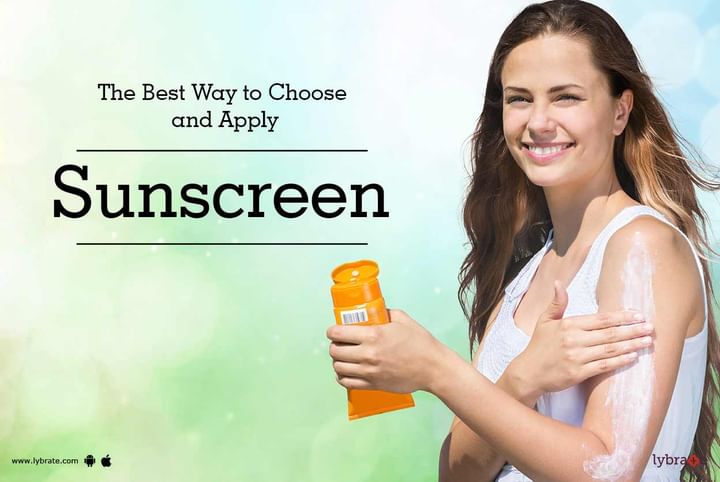The Best Way to Choose and Apply Sunscreen
Sunscreens help shield you from the dangerous ultraviolet (UV) rays of the sun in two ways. Some work by scattering the light, reflecting it away from your body. Others absorb the UV rays before they reach your skin.
A few years ago, choosing a good sunscreen meant you just looked for a high sun protection factor (SPF), which rates how well the sunscreen protects against one type of cancer causing UV ray, ultraviolet B (UVB). SPF refers to blockage of UVB rays only.
Research soon showed that ultraviolet A rays (UVA) also increase skin cancer risk. While UVA rays doesn't cause sunburn, they penetrate deeply into skin and cause wrinkles. The Environmental Protection Agency estimates that up to 90% of skin changes associated with aging are really caused by a lifetime's exposure to UVA rays.
Whether you are heading out to the beach for relaxing, swimming or you are traveling out on the nature trail for a fun day of hiking, sunscreen should be an important part of your day. Follow the instructions contained in this guide to learn how to choose a sunscreen that is right for you. Clearly, you will want a sunscreen with broad-spectrum or multi-spectrum protection for both UVB and UVA.
Tips for choosing the right sunscreen:
- Broad Spectrum: It means the sunscreen protects against UVB and UVA rays and helps prevent skin cancer and sunburn.
- High UVA protection: Penetration of UV rays of the sun can be easily prevented and thus severe kinds of skin troubles can be eliminated. In this case, the product label needs to be checked so that you can get 100% assurance that your skin will be protected against UV rays for sure.
- Water resistance: Pick a sunscreen, which is Water Resistant (effective for up to 40 minutes in water) or Very Water Resistant (effective for up to 80 minutes in water). This means the sunscreen provides protection while swimming or sweating up to the time listed on the label. Even when using a water resistant sunscreen, you should reapply after getting out of the water or after sweating.
- Medicated Products: Do not go by the local brands rather you must choose only medicated products.
- Daily usage: Using sunscreen on a daily basis is a great necessity. In fact, this is one of the most important steps for getting most productive effects. You can apply the cream, especially before going under direct sun.
- Skin friendliness: The sunscreen should not contain any toxic elements or chemicals, otherwise your skin will get adversely affected. Different kinds of skin damages can occur such as spots, patches skin allergies or infections if you do not choose the right sunscreen apt for your skin.
- Correct application of sunscreen: Apply on exposed areas: You should apply sunscreen, especially on those body parts that usually remain exposed towards sun all the time. If you frequently wear bikinis, then you should include legs, thighs, arms, back, face and other areas.
- Enriched with moisturizers: If the sunscreen is equipped with moisturizers, then your skin will become smoother and soothing effects will be found. Some of the moisturizers consist of organic ingredients that can improve skin quality and texture to a great extent. These moisturizers also provide sufficient nutrients to your skin.
- Frequent application: If you are willing to get best results and utmost protection from UV rays, then nothing can be the right way out other than applying the sunscreen on a frequent basis. After every two-hours, you are advised to apply the sunscreen.
- Wearing sun protection accessories: Apart from applying the sunscreen lotion, you are advised wearing different kinds of useful sun-protection accessories for getting greater protection. Some of the most prominent accessories are sunglasses, long sleeves, umbrella and others.



+1.svg)
